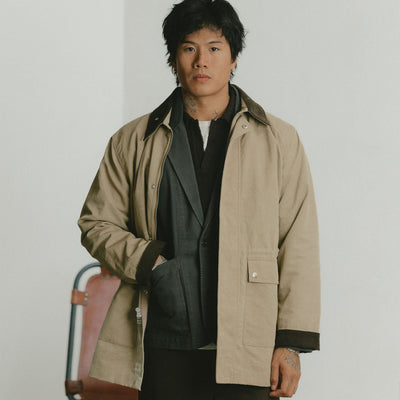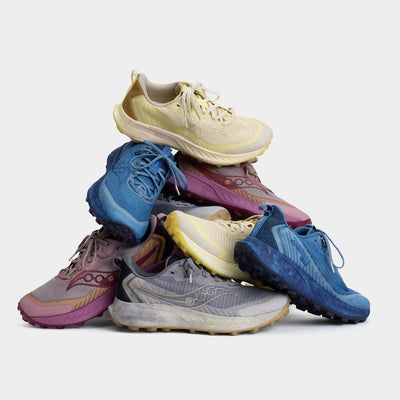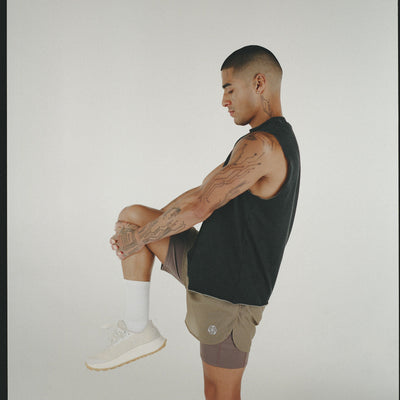"By Design."


Photos: Jessi Noel
Today we’re launching “By Design,” a t-shirt fundraiser in conjunction with longtime collaborator and good friend Ray Spears, or @rayneutron on Instagram. The t-shirt features a photograph that Ray took in 2017. When we saw it for the first time four years ago, it brought forth so many emotions. In light of 2020’s continued unrest over racial injustice and police brutality, we felt that it (sadly) held continued relevance to the topic at hand, and approached Ray about using it for a project.
“By Design” will be available for preorder for the next 72 hours; the presale window will close at midnight on Wednesday, August 26th. 100% of proceeds from the sale of this t-shirt will be donated to National Bail Out. Please note that we have elected to print this t-shirt on a blank instead of using our usual 3sixteen Heavyweight tee bodies in order to maximize donations. We’ve sourced a 6oz black ringspun cotton tee with a soft hand; think about it as somewhere in between our Heavyweight and Pima tees as far as weight and feel go. Sizing is closer to our Pima tees, and we’ve posted full measurements on the product page. The tees retail for $45. Our production costs (including free domestic shipping) total $20 - so printing on blanks will allow us to donate $25 from every tee purchase. Please allow 3 weeks for us to produce and ship all orders.
We know that it feels like the world has, by and large, moved on from the outrage of George Floyd’s unjust murder several months ago. But for Black men and women, their reality has not changed - and thus we must continue to have this conversation. There are no other options. Back in June, many of us felt uncomfortable, lost, and confused at the reality we were being presented with. Many of us committed to listening and learning from Black men and women when we posted black squares on Blackout Tuesday. Here’s an opportunity to do just that. We are thankful for everyone who chooses to purchase a t-shirt to support the cause, but what’s even more important to us right now is the opportunity to elevate Ray’s voice. We took time to talk with him about the image, what the response has been since he took it, and what he hopes that it will accomplish. Whether you buy the tee or not, we ask that you please read the interview below. And if you feel so led, please give to National Bail Out directly; they are doing incredibly important work.
Ray has been shooting lookbooks and editorial for 3sixteen consistently over the past four years. In that time, he has become a friend and confidant to us. We’ve journeyed with him, learned from him, drank wine with him, and wept together with him over the burden of being Black in America. What we’ve learned is that proximity is so important to understanding the journey of another. Those of us who are not Black must be listening to Black voices so that we can understand their lived experiences more clearly. Understanding leads to empathy, and empathy leads to action.
There is no neutral position in the fight for Black lives.


Where were you at when you took this photo? How did it come together?
I took this photo in September of 2017. Medium format was relatively new to me and I and wanted to test a friend’s camera out to see if it was something I wanted to purchase myself. I was also testing out a certain film stock that I’d only shot on 35mm before. The roll was almost done; me and my friend Gabe Rivera were shooting portraits, and as we were leaving Riverside Park in Harlem we found this police vehicle kind of depot just past an underpass. 157th and Riverside, I think. There were two or three frames left on the roll - there’s only 10 to begin with.
This was the first year Kaepernick was being blackballed for protesting police brutality, and I was dealing with a lot of feelings. There was a constant stream of news flowing out that you could hardly keep up with, and that was compounded with a sense of frustration that no matter what you do, how much you obey or comply, you could still be hit with the ultimate penalty. You could be judged and executed by law enforcement right on the spot. I was carrying a lot of weight.
Even the camera I was holding was heavy. It was a Pentax 67; with the lens on it, it might’ve been over 5 pounds. It was hard to hold the camera by the time I took this photo; I had already been shooting for an hour, and I remember my arms were shaking a little. On top of that I was nervous that an officer might come out as I was taking the photo, and then how would I explain myself with this big black tank in my hands. I was fearing what they could mistake it for. When I took the photo, I didn’t really know that it would be received the way that it was. It was an idea that just popped into my head; light was pouring into the tunnel, and it just happened.
When I first saw the photo, I thought that somehow you caught a police officer stretching or in an innocent pose, but the shadow ended up looking like a menace.
No, the photo was impromptu in a different sense (laughs). We staged it, it was Gabe creating the shadow. The light was perfect, and we wanted to play with the shadows, but we knew we had to get it quick. Again, this is why I love to shoot film. I won’t interrogate myself in the moment by looking at the LCD screen. This way, I can ask the questions after the scans come back and try to understand how I was feeling when I took the photo. And then I can start to think about how people feel and how it will be received.
How was it received?
You can’t control what people think of your work. Once it leaves the hard drive, your scanner, your computer screen, you can’t control the meaning they attach to it. From the first time I posted it, though, I saw that it resonated with people. The fear, the fatigue, and the frustration. I think maybe what made the image powerful was the anonymity to it - you see the shadow, you see the intent, but you don’t see actual flesh. You imagine flesh. In the past few years, we’ve had so much access to technology and a barrage of Black death as though it’s normal. It’s always on display - you can google search Laquan McDonald being shot 16 times. I think the shadow in the image (sighs) does something to the viewer: you know something is impending, but you don’t actually see it happening. It doesn’t add to the collective trauma, but it speaks to it. I hope that is the case, at least.


I’m not Black, but I think that it speaks to many because they see it and understand. It’s like the end of “Get Out” when the police car pulls up and everyone who is Black in the theater groans. They know what is about to happen when they see the lights.
As a Black man, what is law enforcement to you?
Depends on where I am. In Harlem, where I live, an occupying force. When I was on a work trip in Maine, they’re the people who - even while off the clock - follow me to ask where I’m going and remind me I don’t belong there.
But I try not to personalize law enforcement because I see it as something bigger than an individual. What I mean by that is, I try not to get into conversations about a singular “good cop” or “bad cop.” That’s a distraction because we are talking about something larger, a system that is founded on a certain set of principles. Police officers then operate based on those principles that we accept as law, as our status quo. These principles and their effects have greatly harmed certain people. As soon as you get into these micro-discussions about good individuals, it distracts from the larger conversation, which is this:
Police are harmful to people who look like myself and a host of others. And even people who don’t look like me, which is to say not just Black men, but Black women, Black Trans women, and to women in general. Sexual assault is #2 on the list of police misconduct behind brutality.
What are your hopes for what this photo can accomplish?
Look - I’m not trying to send out a cry for help to people who don’t understand. I think non-Black folk, particularly White people, are spoken to and catered to in every regard. Including art. Everything is made with them in mind. And I don’t want to make something to explain it to them, because that is incredibly exhausting and the payoff is often not what we want it to be.
For me, I would like folks to just catch up. There are plenty of books and things of that nature, but it’s also about critical thinking. I acknowledge that White people have responded to this photo and have said "Yo it’s powerful," and - whatever it means to you, whatever makes you stop and think and take a moment with it, that’s cool. I’m happy that it had that effect. But I don’t want to have to explain things further without leaving folks room to think and process for themselves.
I think it’s ok for people to be uncomfortable with the image for different reasons. If you don’t like the photo because you were raised to assume the best of law enforcement, that they are working towards the common good and treat everyone equally - if this photo challenges your worldview, that’s good. And if it makes you uncomfortable because it speaks to your reality and in turn, you feel acknowledged that you’re not alone, that you’re not crazy, that’s good too.
There have been so many arguments on the other side that have been intellectually dishonest at best. A lot of outright denial of what was happening between police and Black people started to get a light shown on it through cell phone videos. Over these past few years there’s been a weird sense of vindication amongst Black people when the world began seeing the images that were broadcast across the internet, and the conversation has been shifting. A feeling of “Nah, that’s exactly what it is” and relief that others are finally seeing it too. We’ve all seen a lot of willful denial. Not ignorance, but a choice to believe a certain thing. So, knowing people will squirm or feel discomfort over an image like mine, is fine by me.


Let’s shift gears and talk about the organization we are raising money for: National Bail Out. Why is this organization important to you?
I think I first heard about National Bail Out in 2015, specifically their initiative to free Black mothers and caregivers to spend Mothers Day with their families. It’s really about getting people out of jail who are incarcerated simply because they do not have money.
Essentially the cash bail system criminalizes not being loaded and being accused of a crime. We’re taught “innocent until proven guilty” - but the reality is, if you can’t afford bail, you’re being punished as though you’re guilty. When you’re in jail, you can’t provide for your family or care for loved ones. So you’re stuck. Not if you got bread though, you pay and you’re out. Knowing this, poor and working-class people are pressured to plead guilty in order to get back to their lives and their responsibilities. But now that they have a criminal record, it’s hard to get or keep a job with that blemish. The cash bail system is nasty that way. And anything that nasty was created with the intention - by design - to harm Black people the most.
National Bail Out provides community and employment opportunities for the very people they’ve gotten out of jail, and that’s one of the hardest things to do when you’re no longer incarcerated: to find work.
Ultimately, as I mentioned before, we must move past individuals to examine the system at large. This is larger than "bad apples." This is slave patrols. Big budgets. Police unions. Qualified immunity. Copaganda.
Another reason that I really wanted to support this organization, in particular, was because of its leadership. When we talk about Black liberation, the conversation almost always centers on Black, straight, cisgender men. Like, all the time. This organization is led by Black women. The funny thing about these movements of liberation is that the majority of the work ends up falling on Black women and Black queer people.
Why is that?
There’s a multitude of reasons. As Black men, there are a lot of factors that are out of our control, but there are some things we can control. Some things we cannot necessarily control: Black men are most directly affected by mass incarceration. But we can control attitudes forged within our society: misogynistic behaviors, homophobic mindsets, but also - how we really expect Black women to be the carriers of burdens. I think that extends throughout all of society, way way way back to before we were even free. From when they were breastfeeding White babies on plantations all the way to Black nannies of white children rolling around the Upper East Side with strollers. Over the last four years, I've taken so many photographs of Black women and women of color taking care of White babies. I have so many images that depict this (sighs) burden that is laid on Black women to carry others: physically, emotionally, spiritually. It’s hard to watch because it’s thankless in the sense that they are not the ones being platformed or pushed to the front. And they are misjudged and mischaracterized as they do this work, even by the very people they do the work on behalf of.
But ultimately it comes down to privilege, as a Black man's gender does not hinder his flourishing; his race does. For Black women, though, it's both. So - as a Black man, a Black artist - I want to use any little bit of platform I have to support and highlight the work of Black women, period. This is me doing the bare minimum.

















































































